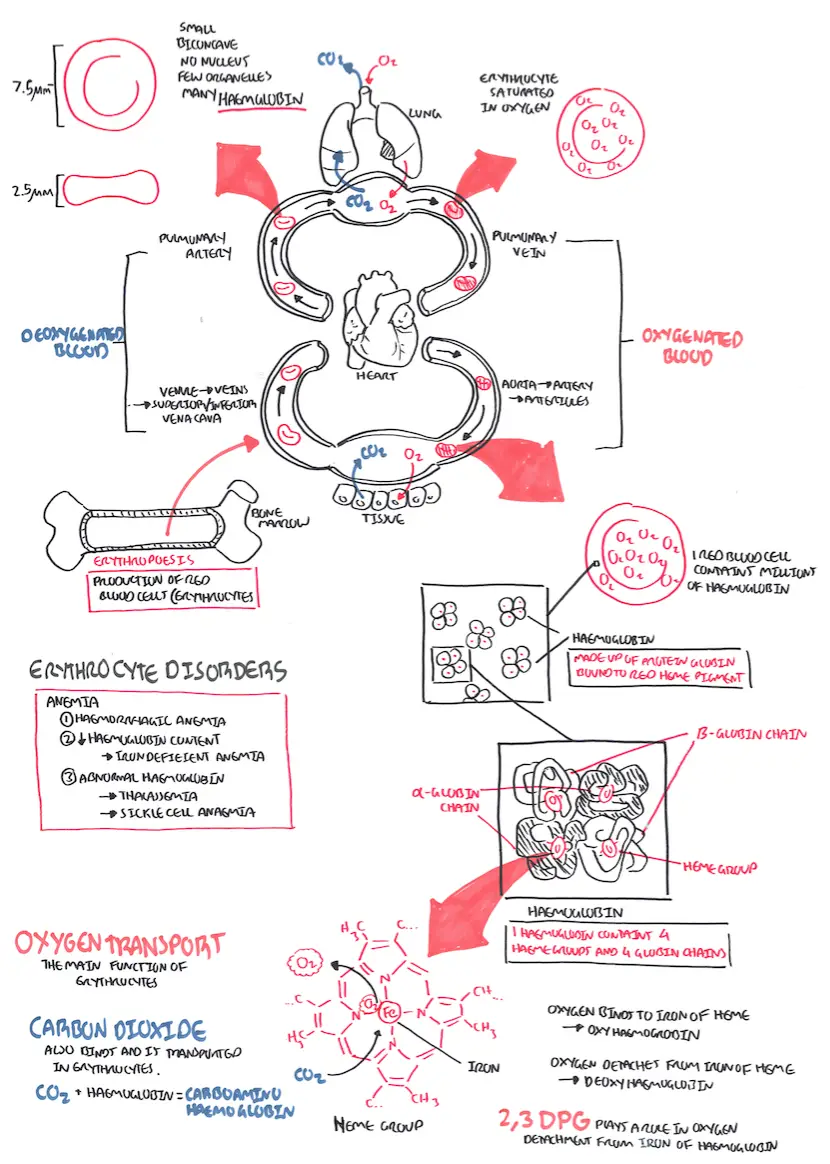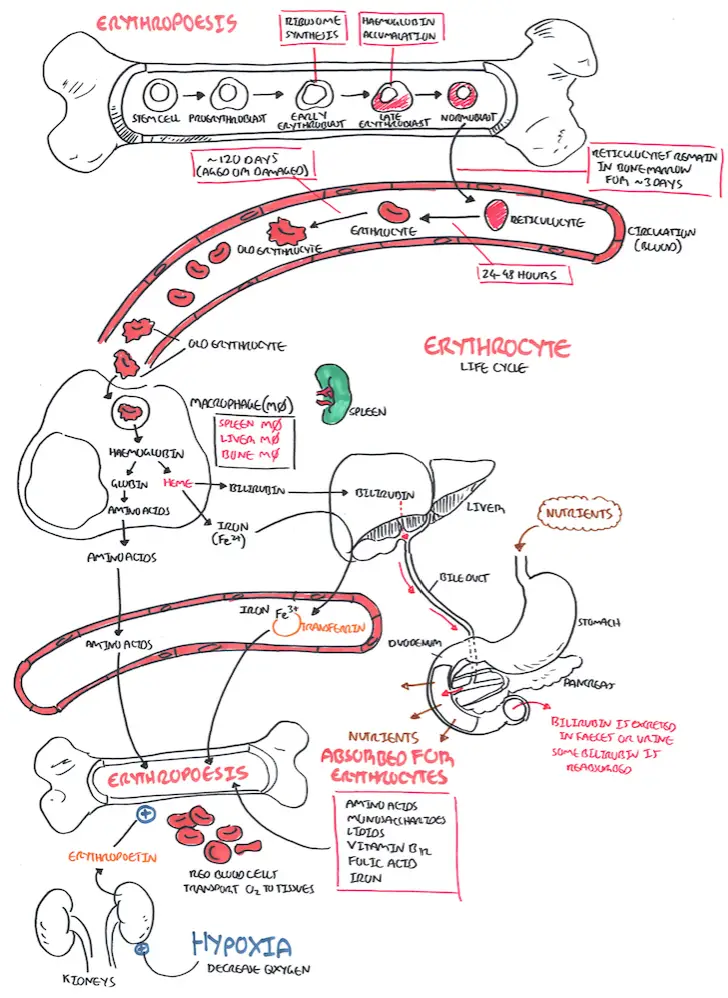Anaemia


The World Health Organization defines anaemia as a haemoglobin (Hb) concentration below 13 g/dl (130 g/L) in men over 15 years of age, below 12 g/dl (120g/L) in non-pregnant women over 15 years of age, and below 11 g/dl (110g/L) in pregnant women. There are many causes of anaemia. It is important to take a comprehensive history, examination and inspect FBC and blood films.
| Remember Anaemia men: 130g/L and in women: 120g/L |
Physiology of RBCs


| Watch: Haematology – RBC life cycle |
If anaemia is suspected begin with:
| Reticulocytes are immature erythrocytes and are markers of erythrocyte production. The reticulocyte count should always be interpreted in the context of the Hb. Should normally increase when there is a decrease in RBC. |
| DIFFERENT TYPES OF ANAEMIA BASED ON MCV | ||
| Microcytic Anaemia | Normocytic Anaemia | Macrocytic Anaemia |
| Iron-deficiency | Anaemia of chronic disease (MCV may be reduced) | Vitamin B12 deficiency |
| Thalasaemia | Haemolytic anaemia (hemolysis) | Alcohol excess |
| Sideroblastic anaemia | Acute blood loss | Reticulocytosis |
| Bone marrow failure/CKD | Myelodysplastic syndrome | |
| Hypothyroidism | Myeloproliferative disorders | |
| Pregnancy | Hypothyroidism | |
| Folate deficiency | ||
| Side Note Bone marrow failure induced anaemia is also known as Aplastic Anaemia. |

Please confirm you want to block this member.
You will no longer be able to:
Please allow a few minutes for this process to complete.
Discussion